Impact on pupils
Although no formal measure of the impact on children was
carried out, all activities were delivered by one practitioner and observed by
another in each setting. Practitioners discussed what they saw and heard in
pairs and gave written feedback, along with photos or videos, after each
activity. Through this method, a robust body of evidence was gathered to
support some measurement of the project’s impact on the children.
- The children were highly engaged throughout all activities
The practitioners reported that the multi-modal approach -
used to introduce the story in a different way at each session - helped keep
the children engaged. Some children enjoyed the tactile book while others
preferred watching the video of the author reading the story. Therefore, this
approach catered for various types of learning. The children showed excitement
at the fact that the author of the picture book was a real person. Their
teachers had met her and she was on their screens, as well as in the story.
This, according to the practitioners, made a big impact on the children.
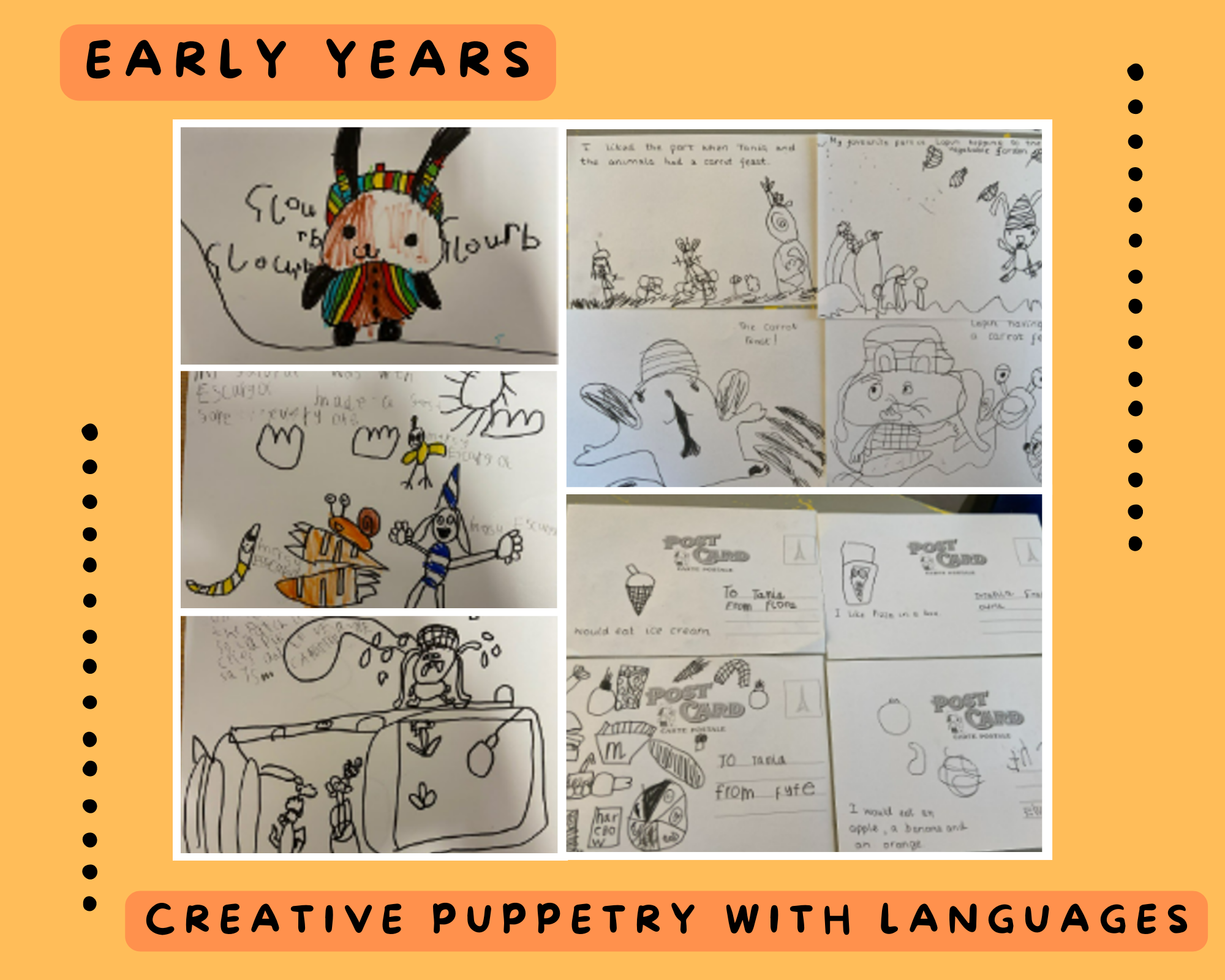
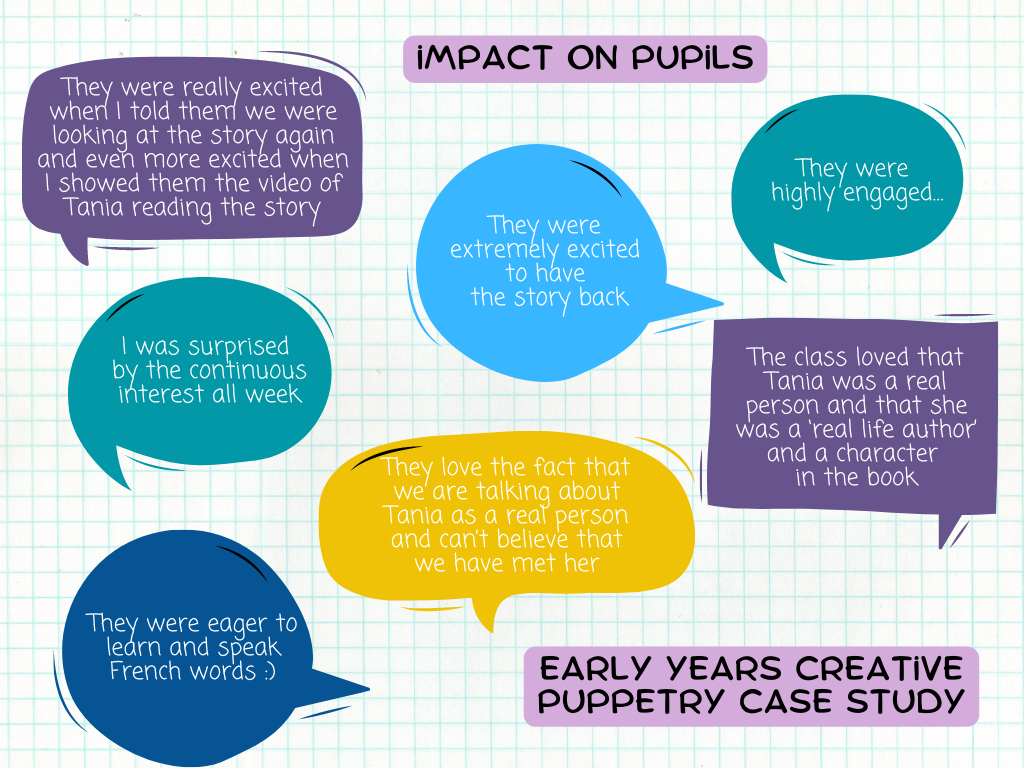
Practitioners also observed good concentration and focus all
round and welcomed how unusually engaged some of the children were:
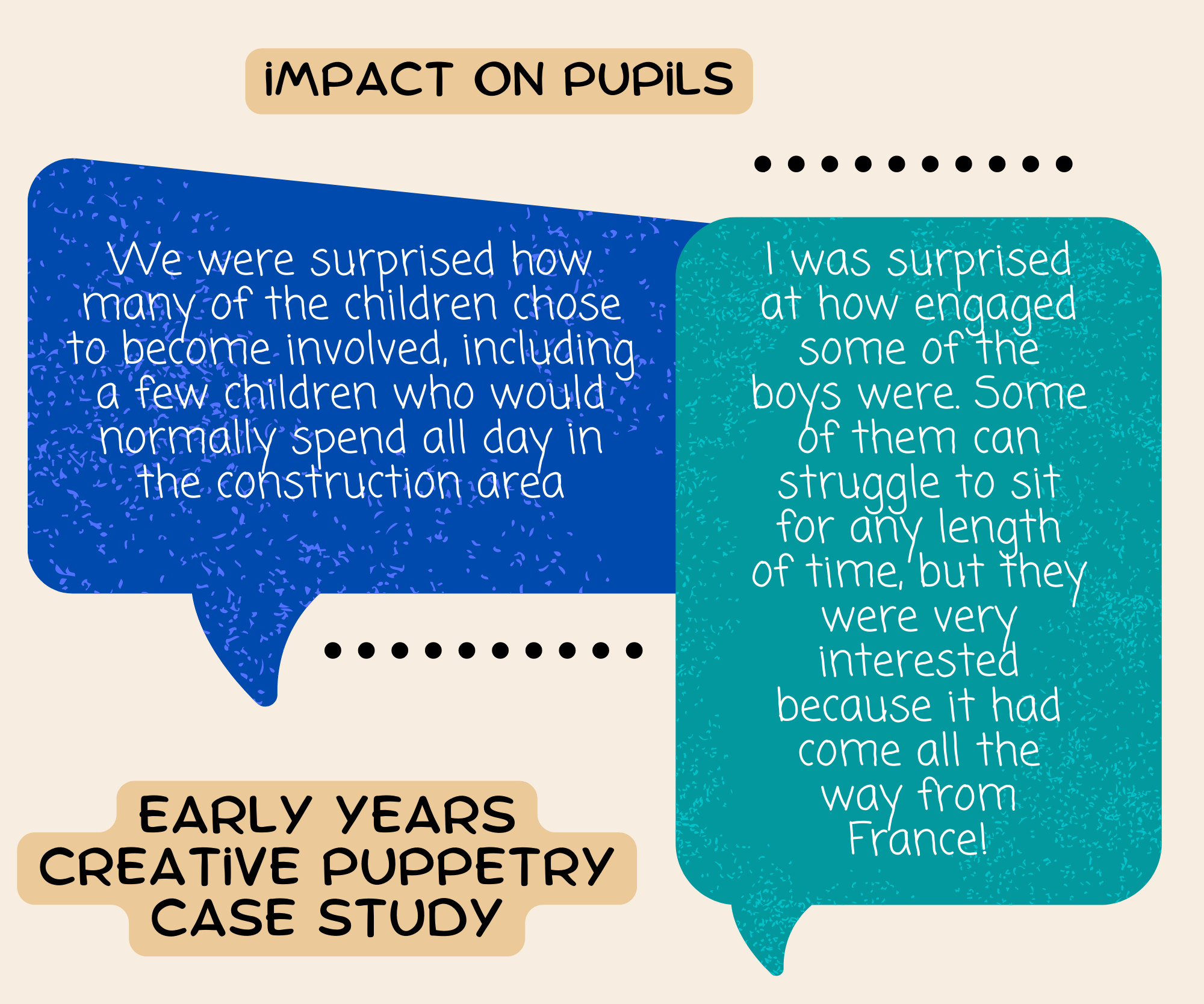
- The children understood and used French words
Most practitioners reported that children were able to make
connections to their prior learning, while some spoke about their experience of
France.
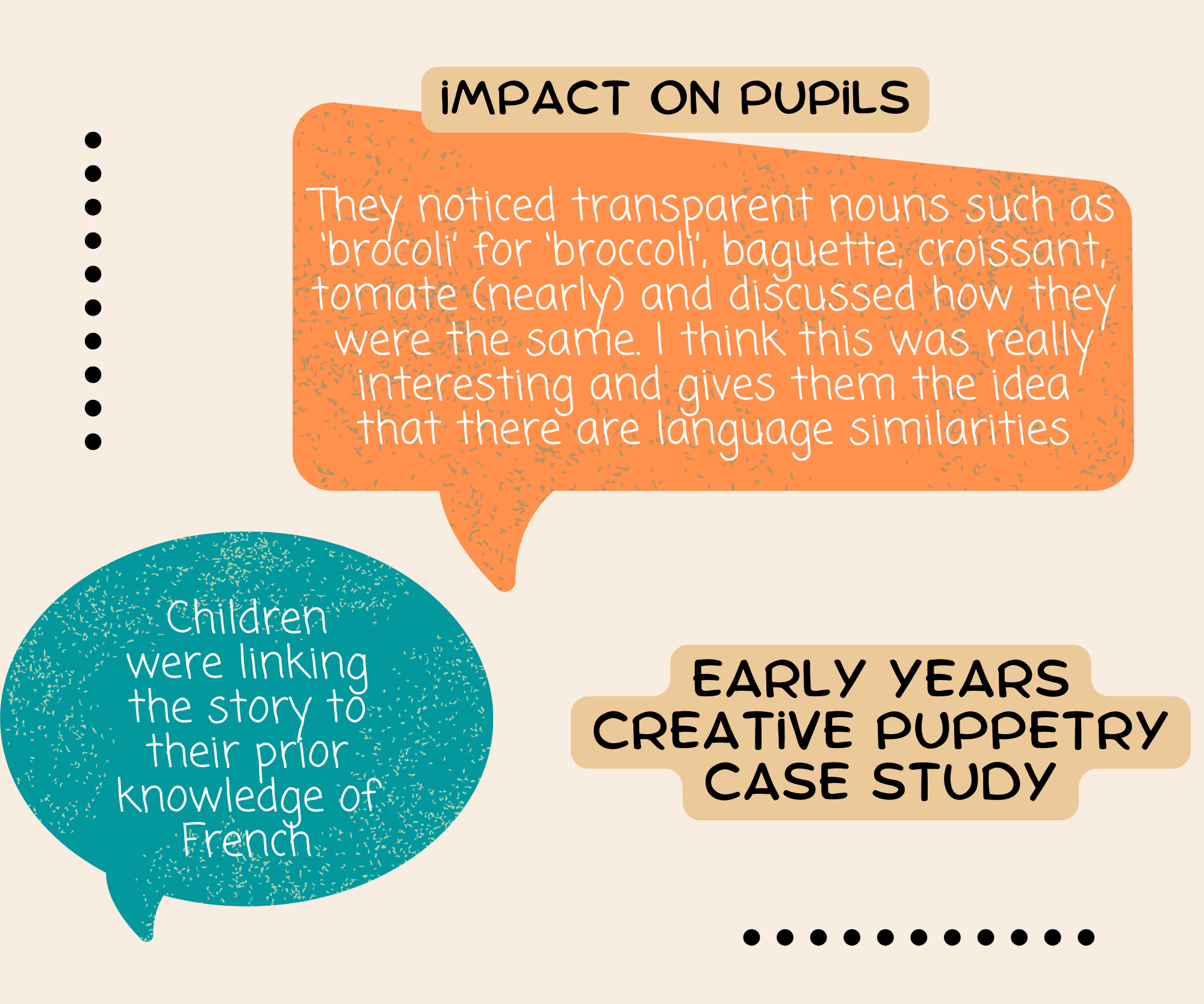
“The children were asking how to say other words in French.
One of the ante-preschoolers asked how to say ‘book’!”
But what the practitioners noticed the most was how much the children used
their French words in free play time.
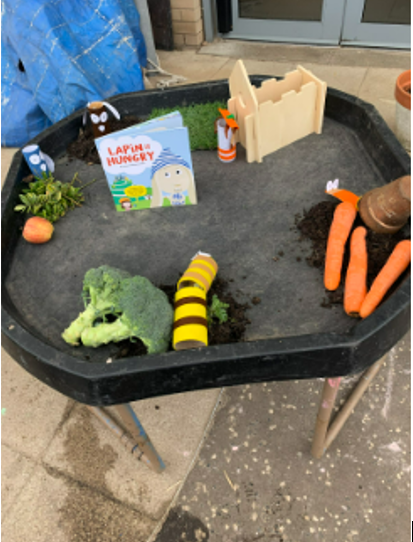
“I was surprised at how well the children have retained the French language and have been using the language with each other.”
“Surprised about how much French words they were able to
recall - Bonjour, Lapin.”
- The children’s learning stretched out to other curriculum
areas
The practitioners’ feedback was peppered with observations
demonstrating that the project invited children to explore other areas of
learning. Some wanted to count in French (Number, Money and Measure -
Mathematics), some asked to grow vegetables (Planet Earth - Science) while
others used iPads to film their peers performing (Computing Science -
Technology) or found where France and Paris were on a globe (People, Place and
environment - Social Studies). All children had the opportunity to explore
puppet making techniques (Art and Design - Expressive Arts), a challenging
activity that they embraced with lots of focus and concentration.
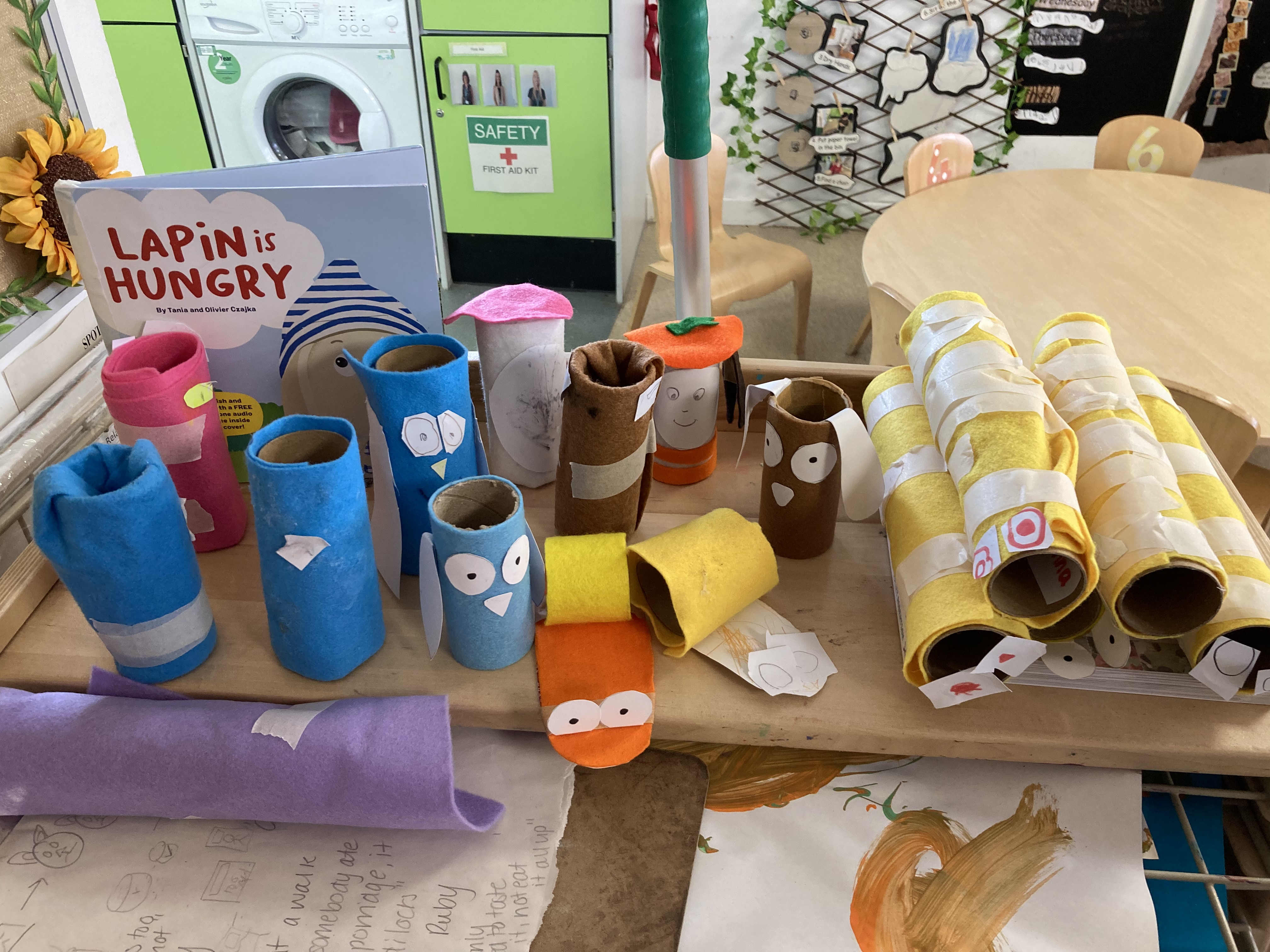
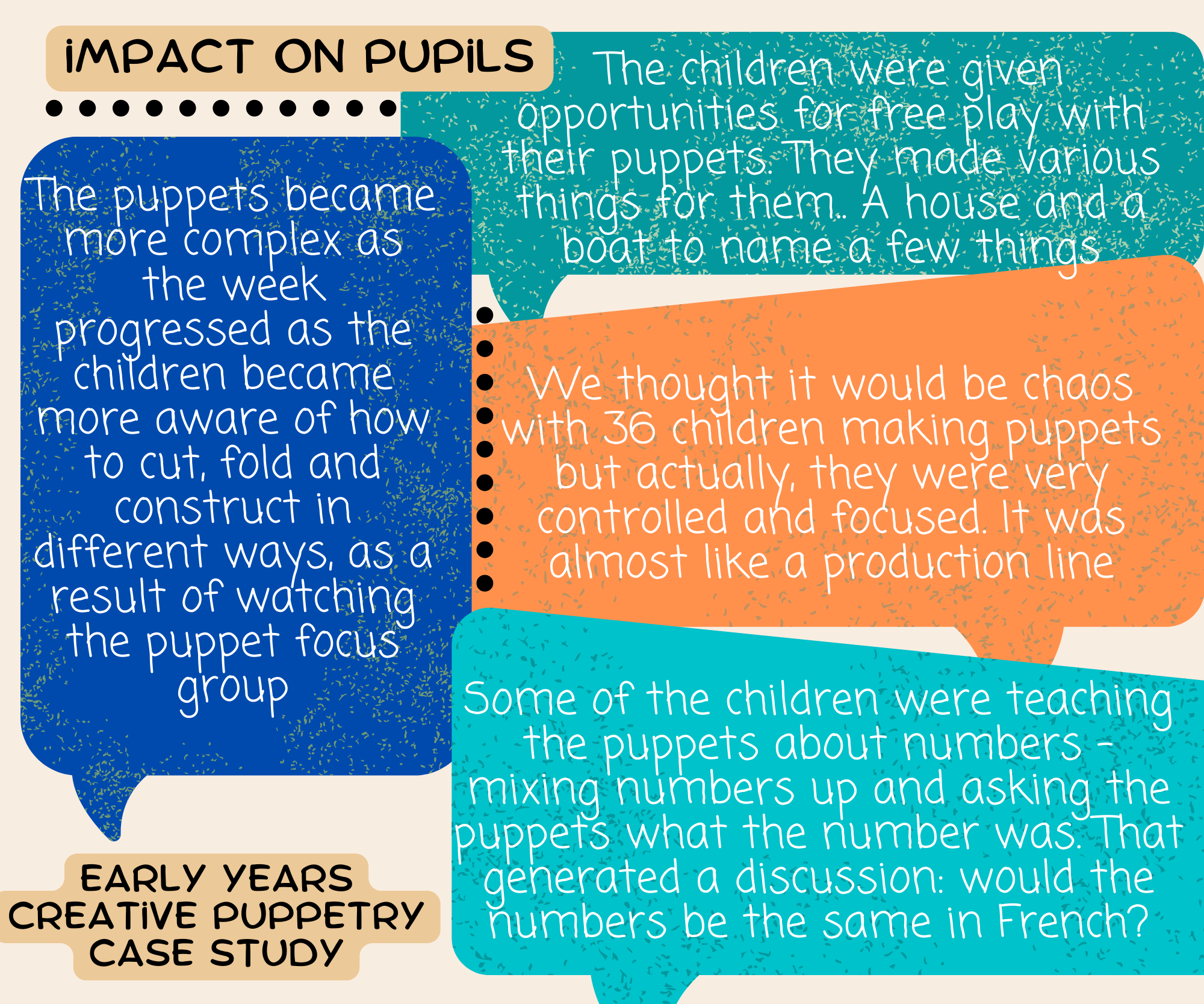
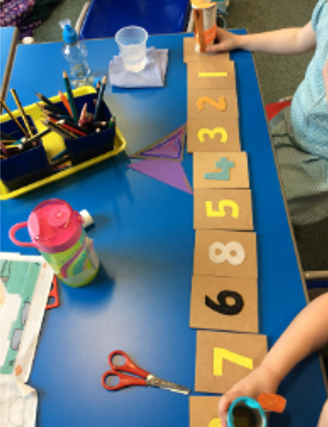
But the strongest link outside Modern Languages learning was
the development of literacy skills, along with a reinforcement of positive
relationships with books: many children wrote French words in their drawings
and they all got to develop their narrative skills by retelling the bilingual
story or creating their own.
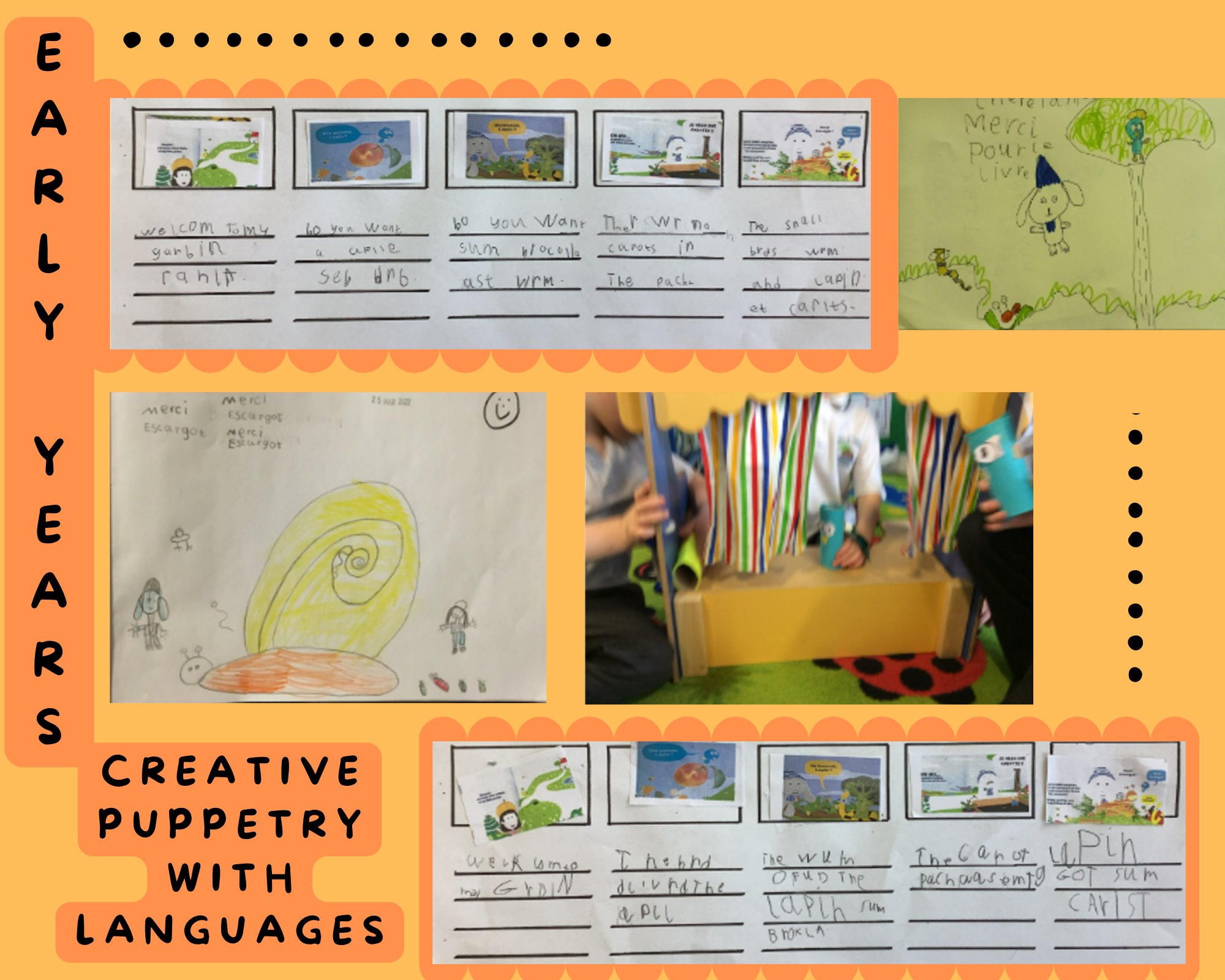
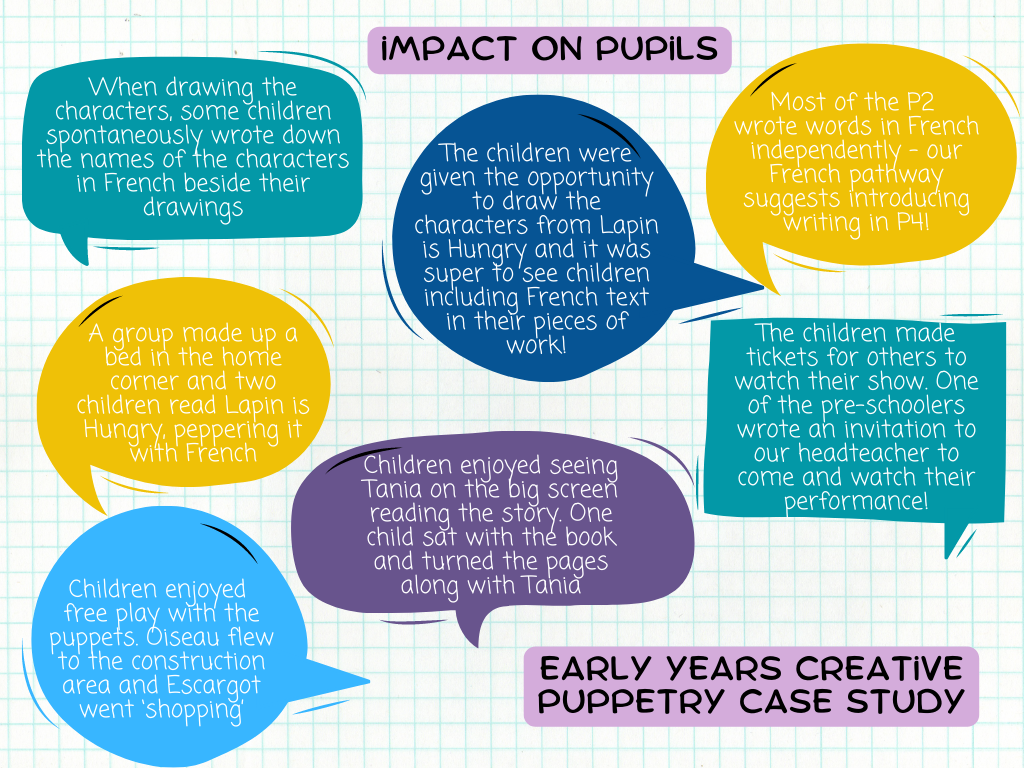
- The children shared their new learning at home
Through dedicated digital platforms, such as SWAY or the
e-journals, practitioners were able to share with families what was happening
in the settings and families were invited to comment or share what their
children said or did at home in relation to the project. This two-way
communication, added to in person verbal chats, seemed to work well and parents
noticed their children’s enthusiasm for the activities.
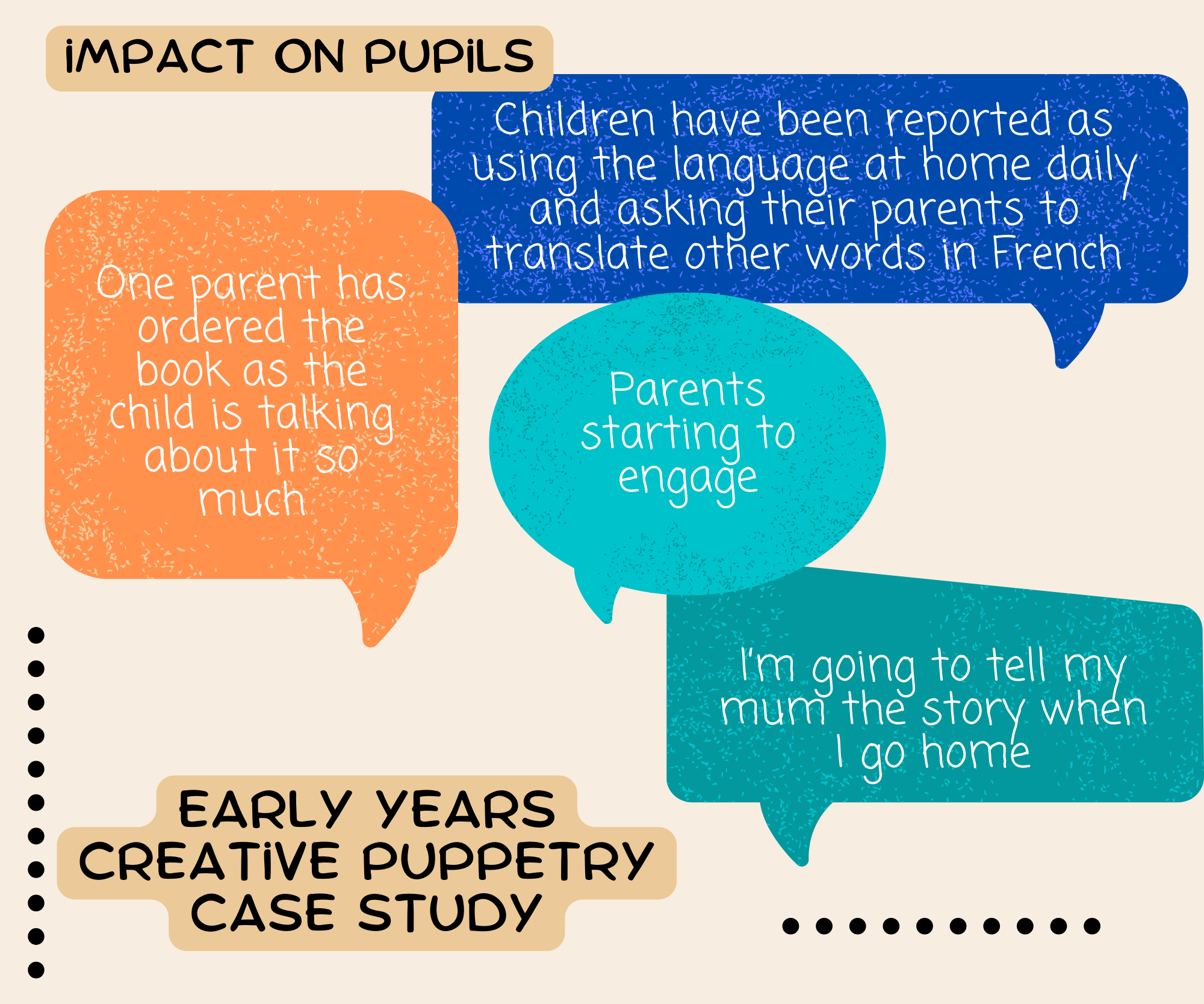
- The children gained an overall confidence
Regarding the children’s confidence in using French
language, the practitioners’ feedback was overwhelmingly positive. It appears
that most children felt comfortable enough to engage in the activities and, in
the process, develop their confidence throughout the project.
Practitioners also reported that the puppet making activity,
which appeared challenging but accessible with, in some cases, adult support,
made the children proud of what they had achieved.
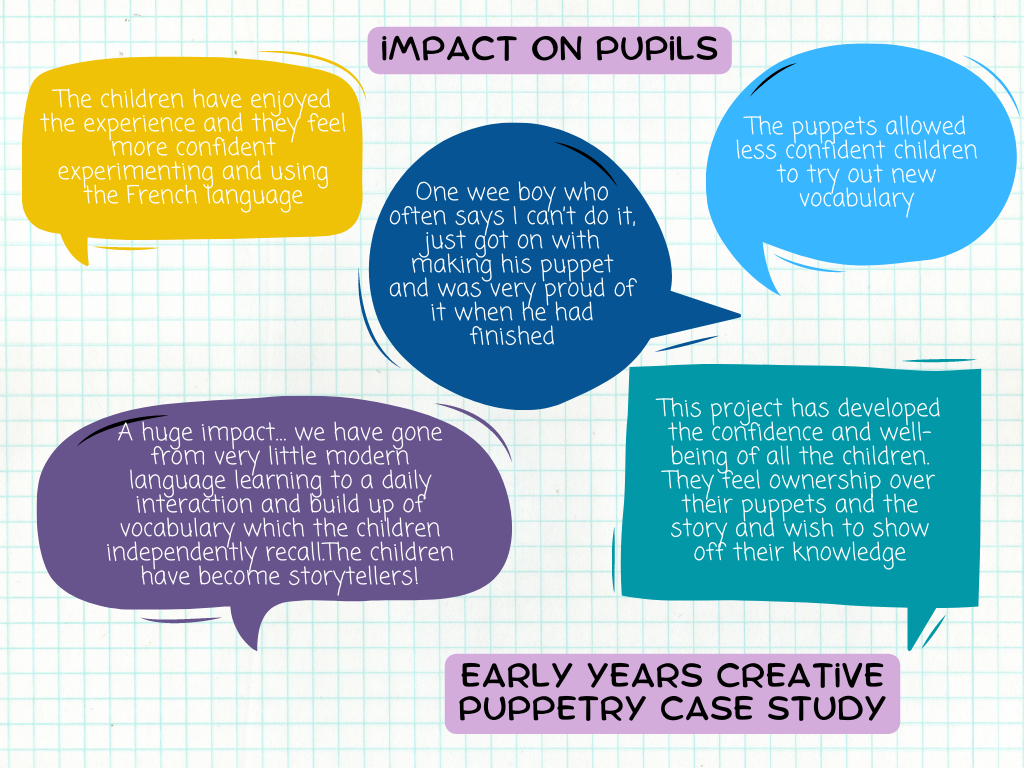
Most settings taking part in the project had children who
have additional support needs (ASN) or speak English as an additional language
(EAL). Some children were on the autism spectrum (⁵ASD). Practitioners were keen to share
that the impact on those children’s confidence was hugely positive.
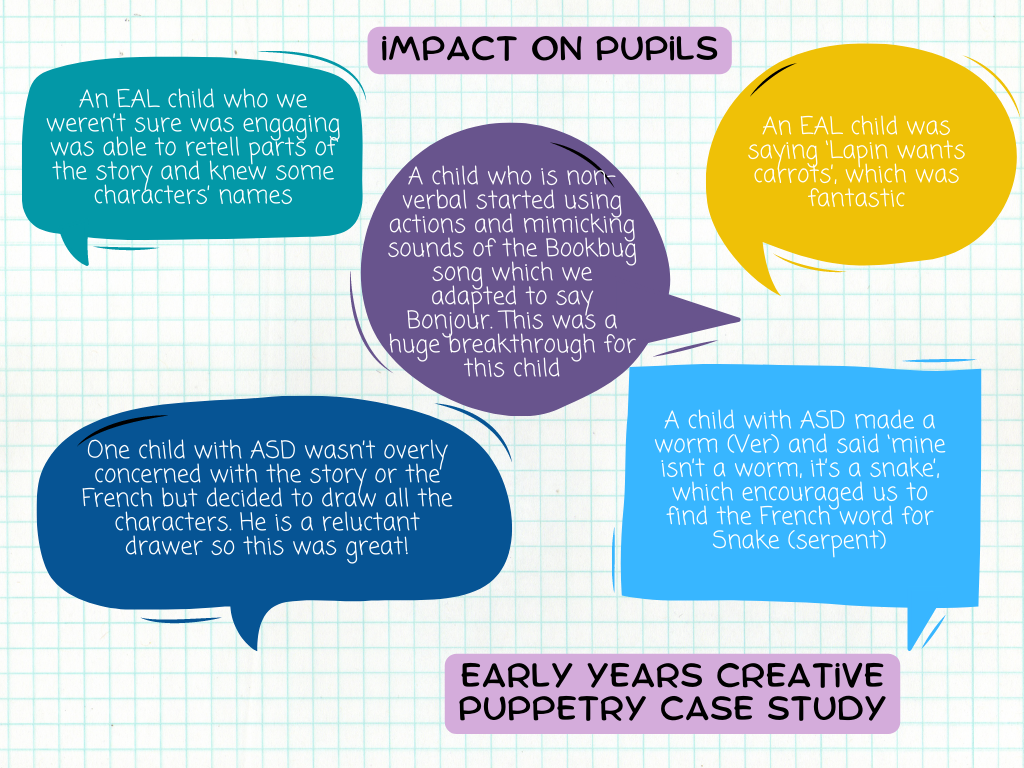
Practitioners also observed that the project supported children who would
usually decide not to engage in such group activities, to do so.
“We have some children who are very shy. The progression
that this group of children made was incredible. By the end of the project,
they wanted to perform the story in front of their friends, which is such a big
step. These children were asking to have photos taken with the puppets and to
be filmed reading the story.”
Finally, throughout puppet-making and a strong emphasis on child-led
and play-based pedagogy, children had ownership of their learning.
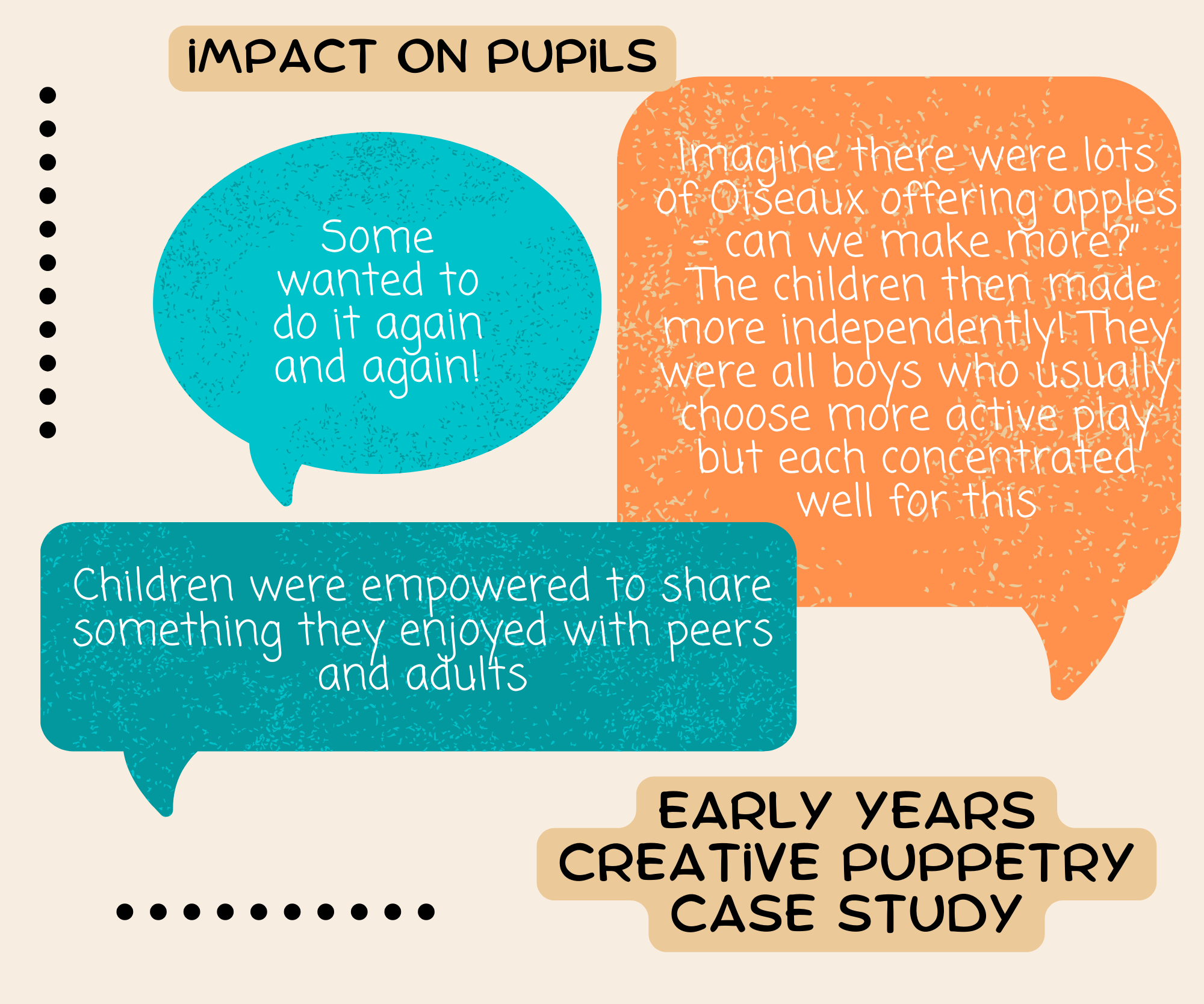
Overall, according to the practitioners’ feedback, the
project supported the children in developing not only their French language
skills but also their confidence in using this new knowledge in conversations
with peers or staff and through play. And because they were highly engaged
throughout, their curiosity and desire to know more about France, the language
and to engage in other learning experiences were aroused. The project also
appears to have had a particularly powerful and positive impact on children who
have ASN or are EAL speakers, giving all involved a sense of agency in their
learning.
Impact on the practitioners
- They valued the resources that accompanied the picture book
For the children’s learning, practitioners found the video
and audio resources extremely useful.
They also appreciated the multi-modal approach that was used
to introduce the story.
“It was mind blowing for the children to see a real author and to understand
she is a real person. This made them really connect to the story.”
“Thanks to the video, some have a lovely French accent.”
They also found the bilingual and accessible approach of the writing valuable
and inclusive:
“The way the story is written has made the French language accessible to all
children. They could easily pick up the main vocabulary.”
For themselves, they appreciated the kit of resources that
was sent to them and included prototype puppets. They also felt that the weekly
meetings along with the debriefing platforms were useful to share experiences,
ideas and thoughts.
“Having the prototypes really made a difference. They really
put me at ease.”
- They were positively surprised and felt more confident
All practitioners reported and welcomed the unexpected high
level of enthusiasm and engagement the children displayed for the various
activities and shared resources. This approach to teaching a language being
totally new to them, they were unsure of what to expect. But it would
appear they were very pleasantly surprised. Although some felt nervous at the
start because their confidence in the French language was low or their puppetry
skills were basic, they all enjoyed taking part in the project.
Their feedback suggests that, overall, the feeling of being
equipped to teach French at Early Level went from ‘moderate’ at the start to
‘well or very well equipped’ at the end.
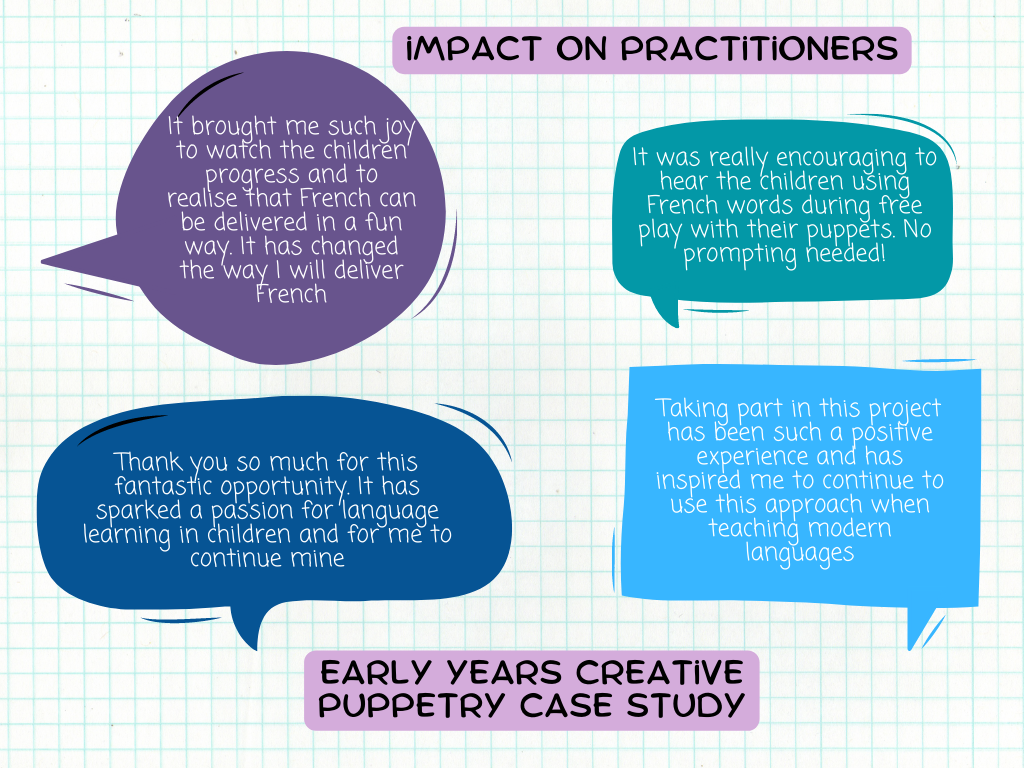
"What great fun!"
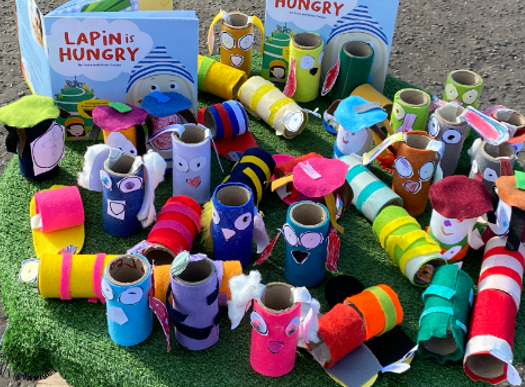
Impact on Tania
- The project has strengthened Tania’s belief in creative
puppetry as a powerful tool for language learning in the early years.
- Highlighted the need for accessible and bilingual story
books for an inclusive and play-based language teaching practice.
Impact on SCILT
- The overwhelming level of interest has highlighted the need
for increased provision of professional learning to support practitioners
teaching languages at Early Level in primary schools and Early Years Centres.